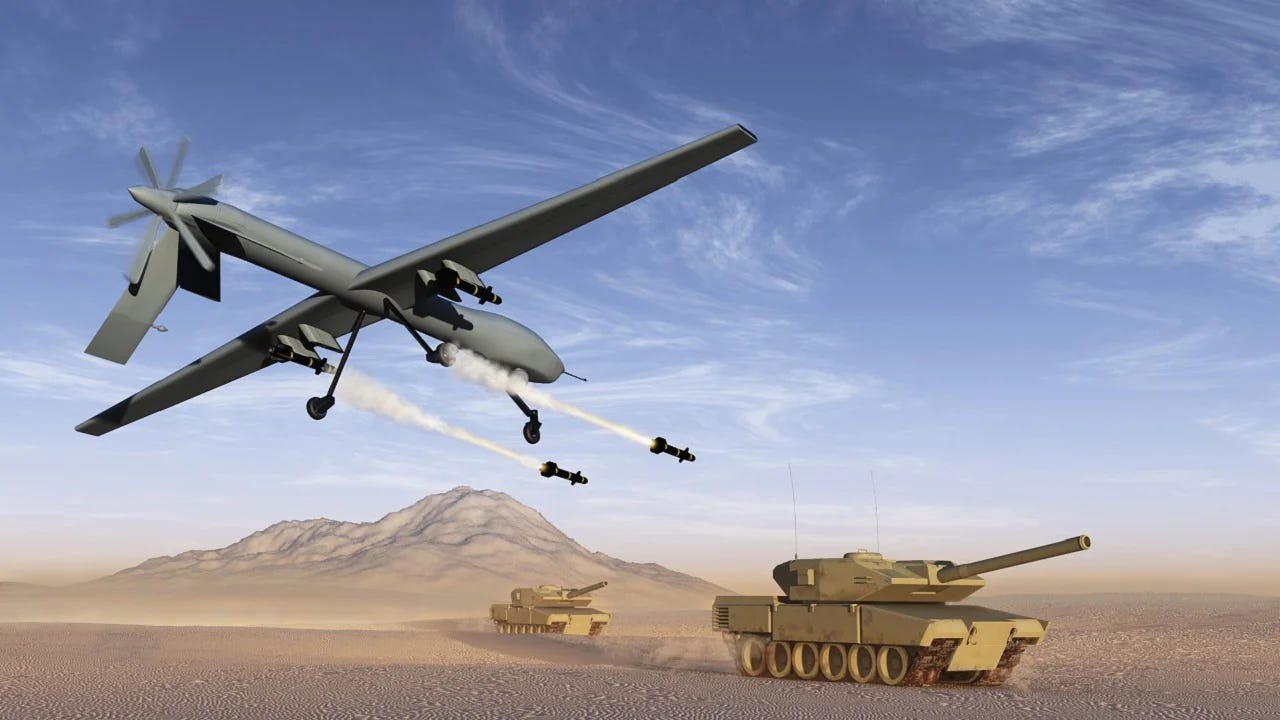The Function of Unmanned Aerial Vehicles (UAVs) in Contemporary Warfare
Your Weekly Shortcut to Deeptech Investing—Exclusive Trends & Startup Reports for VCs & Angels in Just 5 Minutes
By Gael Amouyal, Deeptech Expert
Army Technology lists the top five of the Russian long-range attack drones under development. Image courtesy of Esteban De Armas/Shutterstock.
What is going on?
In the ever-evolving landscape of modern warfare, the utilization of Unmanned Aerial Vehicles (UAVs) has emerged as a transformative force. These cutting-edge technologies have not only reshaped the dynamics of warfare but also sparked discussions in financial markets and societies around the globe. As we delve deeper into this topic, we will explore the significance of UAVs in contemporary conflict scenarios, their influence on wars like the ongoing drone war in Ukraine, and unravel their implications for both financial markets and society as a whole.
What does it mean?
Unmanned Aerial Vehicles, or UAVs, represent a paradigm shift in military strategy. These remotely piloted aircraft have revolutionized modern warfare. In the ongoing drone war in Ukraine, UAVs have been heavily employed, with an estimated loss of 10,000 drones per month in combat. These drones have proven effective in targeting Russian ships and tanks, enhancing the morale of Ukrainian forces, and demonstrating Ukrainian ingenuity in adopting civilian technology for defense, often funded by the civilian population and supporters.
Companies like Northrop Grumman and General Atomics have been at the forefront of UAV technology, providing systems that have played crucial roles in conflicts like Ukraine's drone war. These UAVs have not only provided valuable tactical advantages but have also changed the geopolitical landscape by empowering smaller nations and non-state actors.
Why does it matter?
💸For markets:
UAVs have significant implications for financial markets, driven by their influence on defense budgets and the defense industry. The global military drone market is projected to grow from $14.14 billion in 2023 to $35.60 billion by 2030, at a CAGR of 14.10% during the forecast period. This substantial growth reflects the increasing investment in UAV technology.
The ongoing drone war in Ukraine has demonstrated the critical role UAVs play in modern conflicts, driving interest from investors in defense companies like Lockheed Martin and Boeing. As UAVs continue to prove their effectiveness in warfare, governments allocate more resources to procure these systems, influencing the profitability of defense contractors. Investors must keep a keen eye on these developments to make informed decisions, as showcased by Ukraine's utilization of UAVs.
🧑🏿🤝🧑🏻For society:
The widespread use of UAVs raises ethical, legal, and social questions, as exemplified by the ongoing drone war in Ukraine. UAV strikes have sparked debates about civilian casualties and the ethics of remote warfare. Civil liberties and privacy concerns have also been raised, as UAVs can be used for domestic surveillance purposes. Society must grapple with the implications of UAV technology on warfare, privacy, and the potential for misuse.
However, UAVs also have positive societal impacts. They have been vital in disaster relief, search and rescue operations, and environmental monitoring. Balancing these complex ethical and practical considerations will be crucial as UAV technology continues to advance, taking cues from the experiences of nations like Ukraine.
🔮What’s next?
The future of UAVs in modern warfare is undeniably promising, influenced in part by the developments seen in the ongoing drone war in Ukraine. Continued advancements in artificial intelligence, autonomy, and miniaturization will enhance their capabilities further. UAV swarming, "kamikaze drones," and the transparent battlefield are significant developments. These technologies, as seen in Ukraine, will continue to evolve and impact future conflicts.
In the civilian sector, companies like Amazon and DHL are exploring UAV applications for delivery services, influenced by the successes and challenges seen on the battlefield. Regulatory frameworks will evolve to manage UAV proliferation, ensuring safety and security.
In conclusion, UAVs have cemented their place as a game-changer in modern warfare, influencing financial markets, posing societal challenges, and shaping the future of warfare and civilian applications. As technology advances, the responsible development and use of UAVs will be paramount to harness their potential while addressing ethical, legal, and security concerns. The world watches as these aerial robots redefine the way we approach conflict and innovation in the 21st century, with the ongoing drone war in Ukraine serving as a poignant example of their impact.
✨ That’s all for today. Thanks for reading !
💖Like, follow and subscribe to our Community ! Stay tuned for our next Deeptech Analysis coming up end of the week with our Deeptech Insights Newsletter.
Much love Deeptechers!👋




